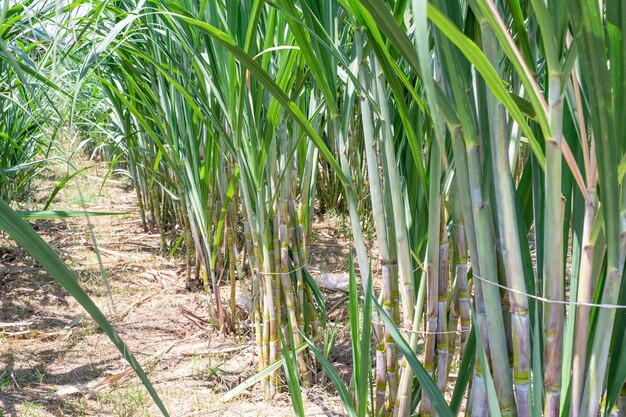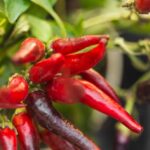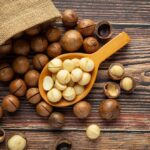Sugarcane is one of South Africa’s most important crops, contributing significantly to the agricultural sector and the economy. For farmers looking to grow sugarcane, understanding the process from seed to harvest is crucial for a successful and profitable yield. This guide will walk you through the entire sugarcane farming process, highlighting the stages of growth, necessary inputs, machinery, common diseases, and best practices for ensuring healthy crops.
1. Land Preparation
Before planting sugarcane, land preparation is key to ensuring good soil health and structure.
- Soil Types: Sugarcane thrives in well-drained, fertile soils with good water-holding capacity. Sandy loams, clay loams, and red soils rich in organic matter are ideal. The soil pH should be between 6.0 and 6.5 for optimal growth.
- Land Clearing and Tillage: Remove any weeds, rocks, or debris from the field. Deep plowing (up to 30 cm) helps to break up compacted layers, followed by harrowing to create a fine tilth that allows easy root penetration.
- Fertilizers: Use soil tests to determine the nutrient needs of your soil. Typically, sugarcane requires nitrogen, phosphorus, and potassium (NPK) fertilizers. Apply a basal dose of NPK (usually 10:20:10) during planting, and follow up with top dressing during the growing season. Organic manure or compost can also boost soil fertility.
2. Planting Sugarcane
Sugarcane is grown primarily through vegetative propagation using stem cuttings called “setts,” rather than seeds.
- Planting Time: In South Africa, sugarcane is planted between February and April for rain-fed crops, or from August to September for irrigated crops.
- Seed Cuttings: Cut healthy cane stalks into 2-3 budded sections (setts) that are about 25–30 cm long. These setts are then planted horizontally in furrows at a depth of about 10 cm. Ensure the buds are facing upward to encourage germination.
- Machinery: A mechanical planter can be used to plant setts uniformly. This machinery also reduces labor costs and ensures better crop establishment.
3. Irrigation and Water Requirements
Water management is critical for sugarcane as it requires a significant amount of water, especially during the initial growth stages.
- Water Needs: Sugarcane requires about 1,500 to 2,500 mm of water throughout its growing cycle, depending on soil type and climatic conditions. It is sensitive to water stress during the germination and tillering stages, and water shortages can reduce yield.
- Irrigation Methods: Drip irrigation or furrow irrigation is preferred, as these methods reduce water wastage. For rain-fed sugarcane, rainfall should be supplemented with irrigation during dry spells.
- Frequency: Irrigate every 7–10 days during dry periods, ensuring the soil remains moist but not waterlogged. Water demand is highest during tillering (the development of new shoots) and tapering off during the ripening stage.
4. Growth Stages of Sugarcane
Understanding the growth stages of sugarcane helps in determining the timing of inputs and care required.
- Germination Stage (0-1 month): After planting, the setts start germinating. Proper soil moisture and temperature (28–30°C) are essential at this stage. Avoid waterlogging as it can lead to rot.
- Tillering Stage (2-6 months): This is when the plant produces additional shoots, which will eventually grow into individual stalks. Fertilization with nitrogen is crucial here to support rapid growth.
- Grand Growth Stage (7-12 months): This is the peak growth period where cane height and thickness increase. Regular irrigation, weed control, and nitrogen application are vital to achieve optimal growth.
- Maturation Stage (12-16 months): During this phase, the plant stores sugar in its stalks. Reduce irrigation to encourage sugar accumulation and hardening of the stalks.
5. Pest and Disease Management
Sugarcane is susceptible to various pests and diseases that can severely impact yields if not controlled.
- Common Diseases: Look out for Ratoon Stunting Disease (RSD), caused by bacteria, and Smut, a fungal disease that affects stalks and reduces sugar content. Apply fungicides if symptoms appear.
- Insect Pests: Key pests include sugarcane borer, which tunnels into stalks, and white grub, which feeds on roots. Biological control using natural predators and regular field monitoring helps, but in severe cases, insecticides may be necessary.
- Pesticides and Herbicides: Apply herbicides like glyphosate for weed control, especially during the early stages of growth. Pesticides should be used sparingly and only when pest populations exceed economic thresholds to avoid resistance and harm to beneficial insects.
6. Weed Control
Weeds compete with sugarcane for nutrients, water, and sunlight, so keeping them under control is critical for healthy crops.
- Pre-emergent Herbicides: Apply pre-emergent herbicides at the time of planting to suppress weed growth during the critical early stages.
- Manual Weeding: Hand weeding or mechanical weeding may be necessary 4–6 weeks after planting and again later in the growing cycle, particularly for persistent weeds.
7. Harvesting Sugarcane
Sugarcane is typically harvested 12–16 months after planting, depending on the variety and growing conditions.
- Harvest Time: The right time to harvest is when the sugar content in the stalks reaches its peak. This is usually determined by testing the juice from a few sample stalks.
- Machinery: Mechanical harvesters are commonly used for large-scale operations, which cut, strip, and load the cane efficiently. For small-scale farms, manual cutting using machetes is common, though labor-intensive.
8. Post-Harvest Handling and Storage
After harvesting, it’s important to manage the storage and transport of sugarcane properly to preserve its sugar content.
- Storage: Sugarcane should be processed as soon as possible after harvesting, ideally within 24–48 hours, to prevent sucrose degradation. If immediate processing is not possible, keep the cane in a cool, shaded area to minimize quality loss.
- Transport: Use appropriate transport methods that minimize damage to the cane during transit to the processing facility.
Growing sugarcane in South Africa requires careful planning and management throughout its life cycle. By using the right techniques in land preparation, irrigation, pest control, and harvest timing, farmers can ensure healthy crops and high yields. With the right knowledge, machinery, and inputs, you can contribute to South Africa’s vibrant sugarcane industry and achieve profitable farming success.









